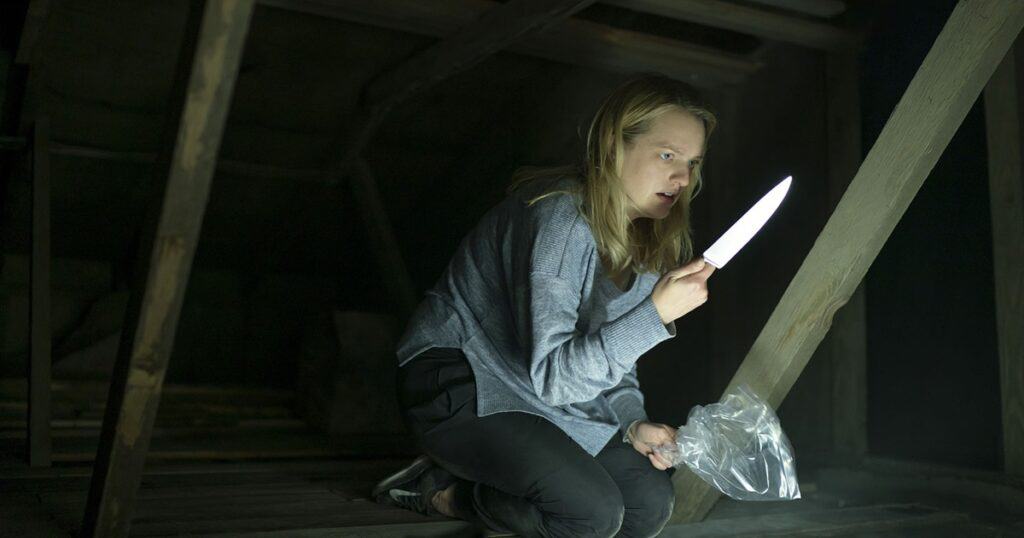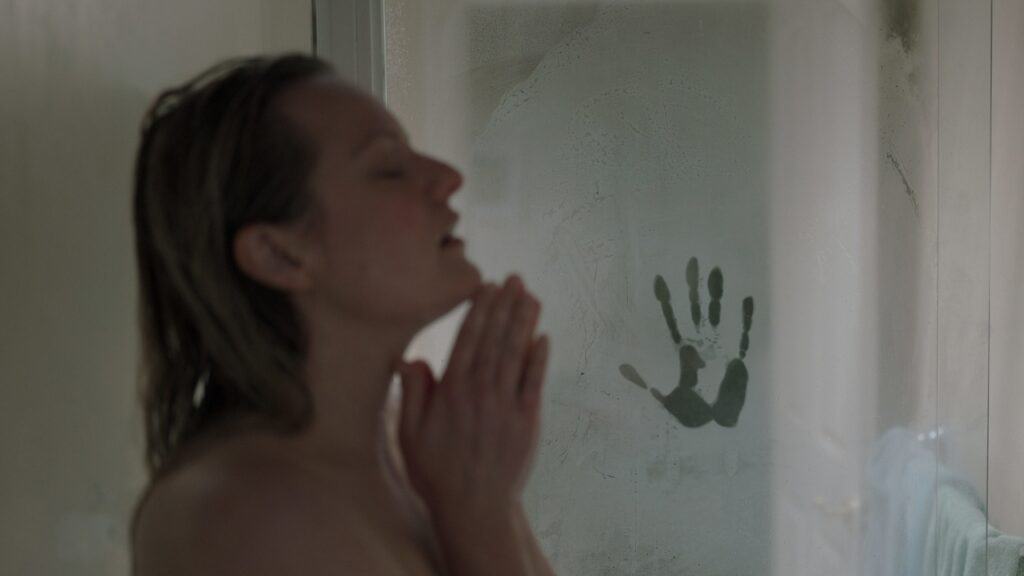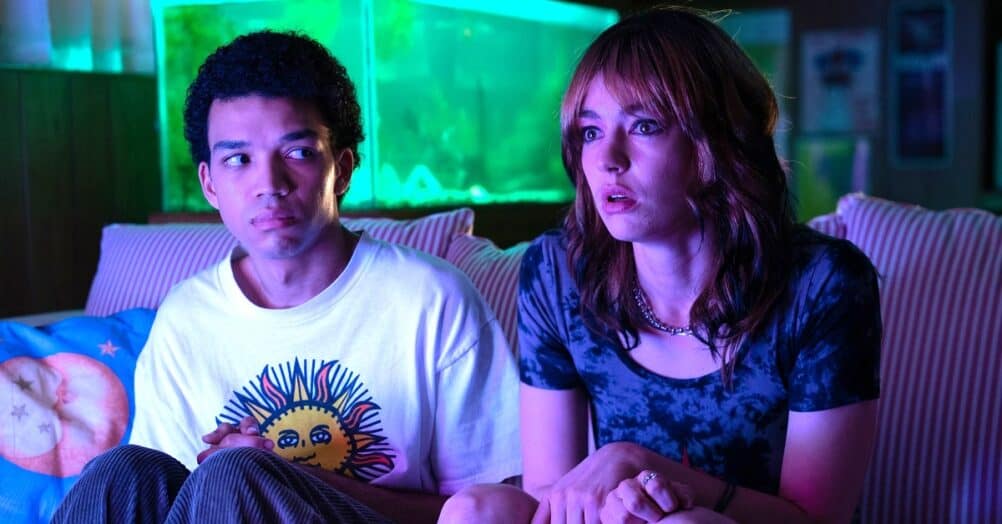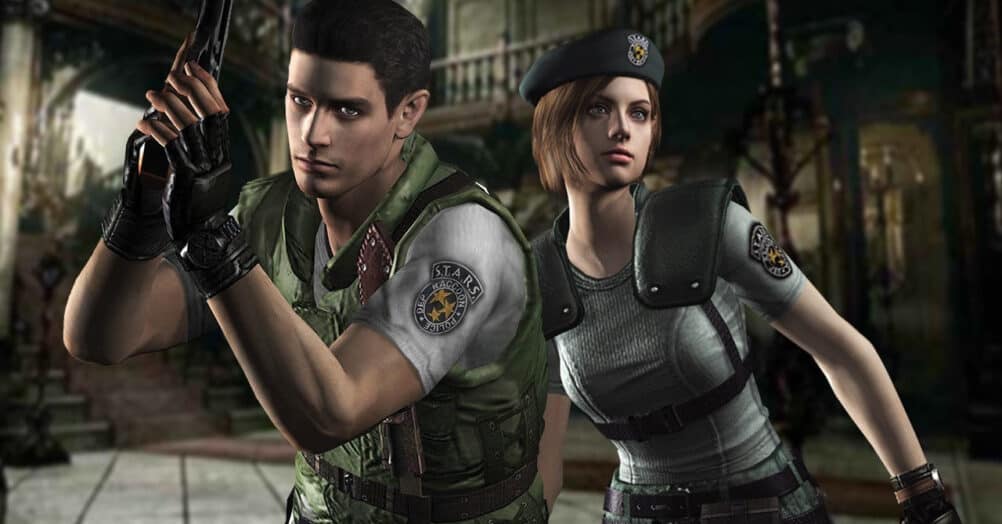The episode of WTF Happened to This Horror Movie? covering The Invisible Man (2020) was Written and Narrated by Adam Walton, Edited by Jaime Vasquez, Produced by Andrew Hatfield and John Fallon, and Executive Produced by Berge Garabedian.
One of the most recurring trends in Hollywood right now is the horror remake, and for better, or worse, it isn’t gonna disappear (pun intended) anytime soon. David Gordon Green’s The Exorcist remake may have been met with a geyser of pea soup from the mouths of critics and fans alike, but that isn’t slowing the trend down for the foreseeable future. The Halloween franchise has been picked up by Miramax with the intention of creating a TV series, and a possible cinematic universe, and that’s just hot off the heels of Halloween Ends, erm, ending the recent trilogy with somewhat of a whimper. Another classic horror franchise that’s also getting a small screen resurrection is Poltergeist, with Amazon reportedly developing a TV series set to be based around the world of the first movie. Amazon acquired MGM studios last year for a whopping $8.5 billion, and Poltergeist was one of several MGM properties they were most interested in, along with Rocky, Legally Blonde, Stargate, The Thomas Crown Affair, and, whisper it, because we all know its gonna suck….Robocop. Back in 2020, when we probably all wished we could disappear from the world, Universal Pictures released The Invisible Man (watch it HERE), drawing upon their back catalog of classic monsters with a more modern spin on the 1933 original. Written and directed by Leigh Whannell, the movie is based upon the novel of the same name by H.G. Wells, and is also a reboot of the 1933 film. Director James Whale delivered a suitably freaky movie back in 1933 and with a premise that could easily be adapted for a more contemporary audience, surely Universal had a sure-fire hit on their hands? Well, were about to find out as we bandage up to see just exactly why Universal brought back one of its most beloved characters, as we discover what the f**k happened to The Invisible Man.
When the original movie was released in 1933, it was already being compared to other classics from the decade such as Rueben Mamoulian’s Dr Jekyll and Mr. Hyde from 1931, Carl Theodor Dreyer’s Vampyr and James Whale’s own take on Frankenstein from 1931. It was a great decade for horror and The Invisible Man not only had to remain faithful to the source material, but also fit in with a series of classic monster movies that also included the likes of King Kong, Freaks, Island of Lost Souls, The Black Cat, Bride of Frankenstein, Mad Love and The Hunchback of Notre Dame. Several of those titles should be familiar to anybody with a penchant for classic horror and, as I alluded to earlier in this retrospective, Hollywood has managed to resurrect several of the aforementioned films for ‘modern audiences’. Fortunately, The Invisible Man was met with a largely positive response from critics and fans alike and throughout time it has also remained a much revered entry in the horror genre. In 1967, Carlos Clarens praised the movie in his book, The Illustrated History of Horror and Science-Fiction Films, stating that, “the scene where Griffin first flaunts his invisibility is the kind of cinema magic that paralyzes disbelief and sets the most skeptical audience wondering”. The book also goes on to praise the movie’s overall technical achievements, as well as the dialogue.
Such was the success of the first movie that it spawned a series of ‘Invisible Man’ films that were largely fragmented, with only a few of the films being connected. The series consists of The Invisible Man, The Invisible Man Returns, The Invisible Woman, Invisible Agent, The Invisible Man’s Revenge and Abbott and Costello Meet the Invisible Man. They all primarily focus on the idea of a serum that causes someone to go invisible, and its inevitable side-effects, but only The Invisible Man Returns and Invisible Agent attempt to connect to the first movie through familiar characters. Universal tried to resurrect the franchise as part of their cinematic Dark Universe back in 2016, however, the commercial failure of the much derided Tom Cruise The Mummy reboot in 2017 derailed all plans to bring good old bandage-man back to our screens.

However, once the studio moved away from their floundering monster-verse they began working on standalone films, and 2019 saw the project revived with Leigh Whannell attached to write and direct. The plot of the movie diverts from the 1933 original with it shifting focus from scientist Adrian Griffin to his estranged ex-girlfriend, Cecilia Kass, played by Mad Men’s excellent actress, Elisabeth Moss, who starts to believe that Adrian’s apparent suicide was not successful. The 1933 film used practical effects and Claude Rains’ excellent performance to create a sense of horror and madness, while the film’s black-and-white cinematography and melodramatic acting contributed to a gothic atmosphere, where Griffin’s descent into madness is the central focus. The 1933 film also does not delve deeply into the backstory or psychology of the character, focusing more on his descent into villainy.
In contrast, the 2020 version modernizes the story and tackles themes of domestic abuse and the psychological trauma endured by the Moss’ protagonist, Cecilia Kass. The invisibility in this adaptation is achieved through cutting-edge technology, which gives it a more contemporary feel and rather than a mad scientist, the 2020 version features an abusive ex-husband who uses invisibility to torment his victim. It explores the power dynamics within relationships and the isolation and fear that can result from domestic abuse, which gives us a fascinating look into the psychological effect this has on Cecilia. This allowed the film’s writers more creative license to explore these themes compared to the original that stuck closely to the villainous nature of the genre at the time.
However, did 2020’s The Invisible Man manage to successfully update the classic H.G. Wells story while expanding upon the first film, while also satiating the demands of modern horror fans? The answer to this is largely yes, however there are elements of the film that just didn’t work for this particular horror fan. Starting with the good stuff, the most obvious highlight is Elisabeth Moss, who delivers a committed performance as Cecilia; a woman terrorized by an abusive relationship she barely manages to escape from, only to find her ex has somehow returned from the dead, and is now invisible. Moss was great as Peggy Olson in the excellent series, Mad Men, and has gone on to show she can more than handle dramatic roles in the popular, if slightly depressing The Handmaid’s Tale. Moss takes on her first major studio lead role in The Invisible Man and she helps to bring alive some of the movie’s more creepy scenes, as Cecelia begins to realize exactly what she is up against.
However, while the movie is a well constructed thriller, and the overall cast do their best with the strong material they have to work with, it unfortunately unravels in a slightly disjointed third act. Despite the concept of the movie being a proven success in the past, the 2020 remake isn’t inventive enough to bring what should have been a rousing finale to the melodrama of the first two acts. There’s some pretty decent visual effects thrown into the mix, as you’d expect from a relatively high budget studio flick, but when director Whannell should push the boundaries of the film’s concept, he instead frustratingly holds back. The movie is in need of some more effective set-pieces and despite the antagonists’ background in ‘optics’ being a well known fact to all and sundry, everyone just assumes the beleaguered Cecelia has lost her mind, despite having no history of mental health issues.
Ultimately, Moss’ fiery performance carries the film through its rather flabby 125-minute run-time. However, instead of giving us an exciting and emotionally satisfying finale, the movie dives headfirst into cliches of the genre with nonsensical action, a plot-hole that’s left wide open and some pretty dodgy visual effects. The final scene also opts for shock value and, although the effort is appreciated, it doesn’t go out with the intended gusto it was aiming for. It’s a shame then that the central concept isn’t given the necessary inventiveness that the franchise deserves, or in fact needs, but despite this, the movie works on enough levels to make it worth a revisit. However, it’s too tame and ultimately laughable towards the end so I don’t think I’ll be revisiting it again, anytime soon.

The Invisible Man opened on $70.4 million in the US and Canada and grossed a further $74.1 million from other territories, for an overall total of $144.5 million worldwide, against a modest $7 million budget. The movie was projected to gross a reported amount of $24 – $30 million across 3,610 theaters and by the time its fourth week arrived it began to play mostly in drive-through theaters, where it continued to make a very respectable amount, despite the restrictions in place at the time.
Critically, The Invisible Man was met with a mostly positive response and review aggregator Rotten Tomatoes shows that 92% of 422 reviews of the film were positive with an average rating of 7.7/10, if those stats have any bearing on the movie’s quality for you. The New York Times praised Elisabeth Moss’ performance, saying that it, “gives the movie its emotional stakes. While her agony can be unnerving, it is even more shivery when her weeping stops and this horror-movie damsel in distress becomes a threat”. Other critics also highlighted Moss as one of the reasons to see the movie, as well as the aesthetics and filmmaking style of Blumhouse Productions. On the flip side, the BBC were less than impressed with the movie, giving it two out of five stars and lamenting that, “the latest remake of the HG Wells tale offers a timely feminist spin – but it’s lacking in thrills. At a time when small-scale horror movies can be as stunning as A Quiet Place and Get Out, a film as perfunctory as The Invisible Man feels insulting.” Harsh, but a fair assessment overall.
Ultimately then, The Invisible Man from 2020 is a decent enough remake of a classic franchise and while it would be good to see the studios allow their directors enough slack to really express themselves, the performance of Elisabeth Moss, especially, elevates it from being just another tame remake of a classic IP. More importantly though, what’s YOUR take on the remake? Are we being too critical of the movie’s flaws or should people stick with the cult classic original from 1933. As usual, let us know in the comments and we’ll see you wonderful ghouls next time. Thanks for watching!
A couple of the previous episodes of WTF Happened to This Horror Movie? can be seen below. To see more, head over to our JoBlo Horror Originals YouTube channel – and subscribe while you’re there!




















Follow the JOBLO MOVIE NETWORK
Follow us on YOUTUBE
Follow ARROW IN THE HEAD
Follow AITH on YOUTUBE